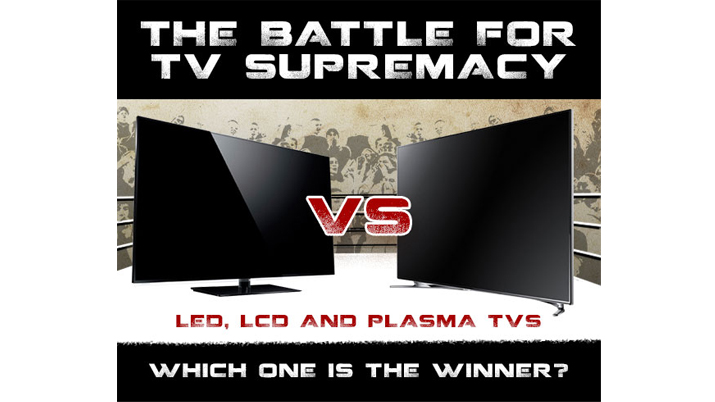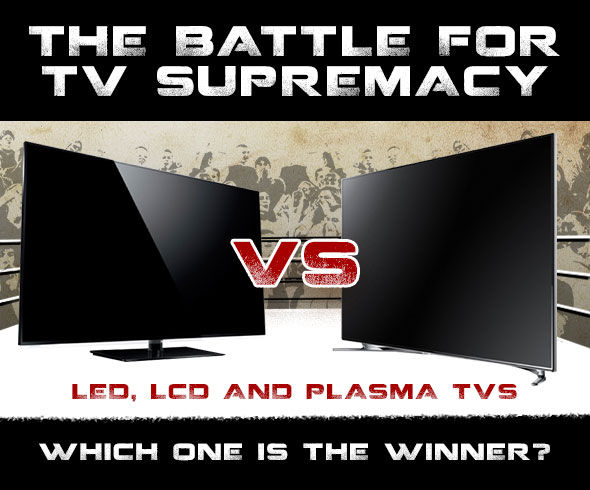The Battle for TV Supremacy
Sherlock vs. Moriarty, the Federation vs. the Romulans, Batman vs. Superman –the greatest fictional battles occur when neither competitor has a distinct advantage over the other.

Sherlock vs. Moriarty, the Federation vs. the Romulans, Batman vs. Superman the greatest fictional battles occur when neither competitor has a distinct advantage over the other. This is the same concept with LED TVs vs. LCD TVs and LED TVs vs. plasma TVs. Each type of TV has unique strengths and weaknesses relative to the others; it's a consumer electronics game of paper, rock, scissors. So which TV is best for you? We'll break them down and let you decide.
LCD TVs
Pro: Better selection of budget TVs, a lighter hit on your pocket book.
Con: More and more manufacturers are phasing this technology out.
LCD stands for liquid crystal display. Years ago, these TVs were the rage, mainly because the flat panels were bigger and much thinner than the round CRT (cathode ray tube) TVs. LCDs are currently the most popular TV sold today, however big screen LEDs are catching up. In fact, LCDs look to be phasing out because the prices of LED TVs are starting to come down. LCD TVs use a different back lighting than LED that is not as energy efficient as the LED counterparts. LCD TV picture quality is a tad lower than plasma and LED TVs as well.
Plasma TVs
Pro: Has the best picture quality.
Sign up to receive the latest news, reviews, buying guides and deals direct to your inbox
Con: The glass screen causes problems you won t find on an LCD or LED screen as much.
Now if you re looking for the best picture quality, the best plasma TVs generally outperform the LCD and LED colleagues. There is a stigma associated with plasma TVs as being older technology, when in fact; these TVs have not been on the market much longer than the others. Plasma TVs also use a glass screen, which tends to have a stronger glare than the matte plastic screens on LEDs and LCDs. Plasmas can reportedly have problems with burnt-in images as well, if the same image is left on the screen too long. This is when an image gets permanently burned into your screen and leaves a slight outline or silhouette. Now these problems are nowhere near as prevalent as they once were, but the problems are more known on plasmas than on LED TVs or LCDs.
LED TVs
Pro: A brighter, more energy efficient screen.
Cons: Picture quality is not as good as plasmas.
To be technical with you, LED screens are LCD screens, as they use the same display but LCD TVs use a separate light source in the TV to illuminate the screen while LED TVs use light emitting diodes, which can produce more light with less energy. And the backlighting is a little different, which is why companies distinguish LED TVs from LCD TVs. LED TVs with a backlit screen are ideal for great picture quality. Back lighting and local dimming can create greater contrast on your TV. LED TVs generally don t have as crisp of a picture as a plasma TV, although the best LED TVs are close.
In the competitive world of consumer televisions it can be hard to decide which TV is best for you. While LCD TVs may be the most popular now, LED TVs are starting to match them pricewise, while offering more desirable technology. Not all manufacturers still make plasma TVs, but for true picture quality aficionados those are the way to go.


